Supremely functional, the 1920s kitchen of Woodrow and Edith Wilson’s Georgian Revival home in Washington, D.C., boasted the period’s latest amenities. (Photo: Erik Johnson)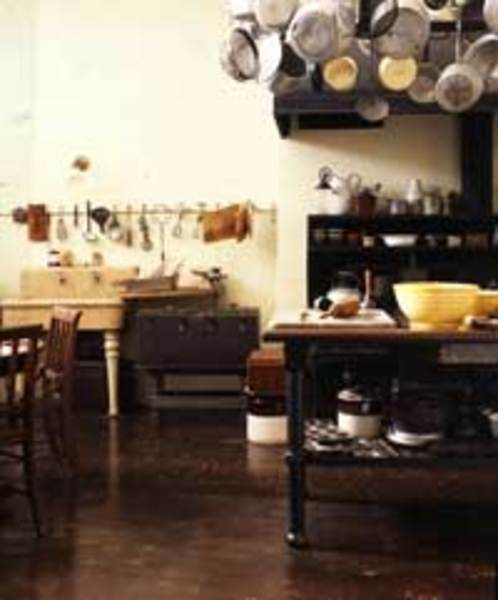
Quick: What’s the first room you redid—or want to redo—in your old house? Chances are, it’s the kitchen. This central, ever-changing hub tops many old-house owners’ “most in need of a remodel” list. But as culinary technology and kitchen decor trends evolve, old-house kitchens are in danger of losing their original detailing and falling out of touch with the era of the house.
While we wouldn’t want to return to the days of stoking a coal-burning stove, fetching water from an outdoor well, or prepping food without the customary work triangle, we do want spaces that lend a sense of nostalgia and history. If you’re trying to re-create a period look in your kitchen, it is possible to gain a sense of authenticity without sacrificing convenience and comfort. The lovingly restored kitchens of house museums—such as the Woodrow Wilson House in Washington, D.C.—provide an excellent opportunity to gather clues on how older kitchens functioned and to match up reproduction details.
Farmhouse drainboard sink with legs by Sign of the Crab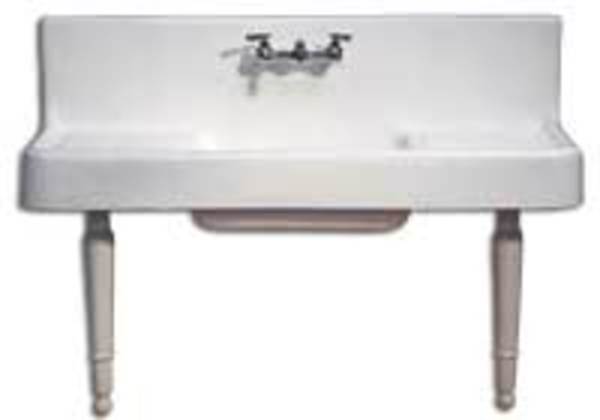
Design Direction
After leaving the White House, Woodrow and Edith Wilson moved into a Georgian Revival house designed by Waddy Butler Wood, an architect known for his grand homes. Their 22-room mansion has been perfectly preserved just as it was when the Wilsons lived there, from 1921 to 1924. Knowing she wanted the house to eventually become a museum honoring her husband, Edith photographed and documented each room extensively—including the kitchen.
Wood was a master at designing homes that fit well into their climate and allowed for passive cooling and heating, and this ability can be seen throughout the Wilson house, especially in the kitchen. The cavernous kitchen is said to be one of the most comfortable rooms in the house, in part because of its cool, basement-level locale. High ceilings and operable transom windows over doors allow for air circulation. The top windowpanes of the four nine-over-nine double-hung windows are corrugated to diffuse sunlight, which also helps keep the room cooler. A food storage pantry (or larder) is located here, and it too has a window to allow cool air to circulate.
Although Wood’s design creates a chilly space, the sink, stove, and icebox are spread throughout the room, which meant the Wilsons’ servants, Mary and Isaac Scott, would keep warm hustling from work station to work station.
Village single sconce by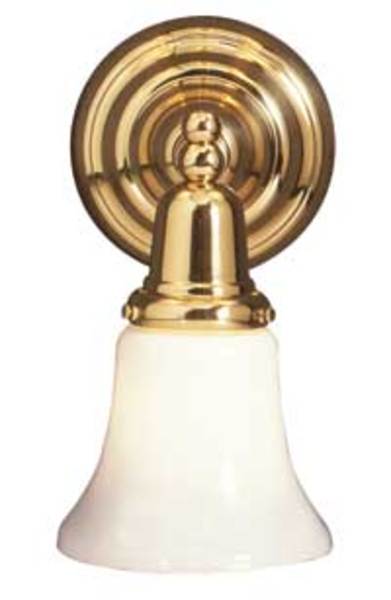
Ahead-of-the-Time Amenities
The Wilson kitchen’s features were cutting-edge for the day. Among the many bells and whistles were a servant’s call box, intercom speaker, and dumbwaiter. Mary Scott cooked the couple’s meals on a commercial-grade, coal-burning, cast-iron Duparquet, Huot & Moneuse Co. stove, which was later converted to gas. The massive stove’s range burner and two ovens came in handy when Mary prepared dinners for heads of state and other visiting dignitaries. An equally gargantuan barrel-shaped metal range hood with a ventilated stovepipe carried cooking odors and heat outdoors. A 6′ enameled worktable crowned by a large iron pot rack provided plenty of space for food prep near the stove.
Another of the kitchen’s luxuries was its hot and cold running water, a rarity during a period in which only about one out of four American kitchens had sinks with piped-in plumbing. The water flows into not one but two enameled cast-iron sinks with traditional wall-mounted faucets—one for prepping food and the other for washing pots and pans. (A third sink, designed for washing fragile china, is located in the butler’s pantry off the main dining room upstairs. It’s made of zinc, which, as a softer metal, won’t chip dropped plates as easily as other surfaces.)
Next to the kitchen stove is a food warmer—the equivalent of a modern-day microwave. Two round stones placed inside would retain heat for long periods of time and keep food warm until ready to serve. Because of the distance from the kitchen to the dining room upstairs, another warming oven was located in the butler’s pantry. A large, metal-lined wooden icebox with three storage chests stands near the rear entrance to the kitchen so ice could be delivered easily.
Finishing Touches
Although the Wilsons’ kitchen had the latest technologies, the room was, like all kitchens of the period, fairly unadorned. After all, it wasn’t a public space—it was used strictly by the servants for cooking and cleaning. However, the few aesthetic details reflect the prevailing trends of the day. The walls are painted a light green, a popular kitchen color in the 1920s and ’30s. The linoleum flooring was also common in kitchens because it is durable, easy to clean, comfortable on the feet, and gentle on dropped dishes. Only a few squares of linoleum have been replaced over the life of the house—all in front of the stove, due to wear over time. Doorknobs made of white porcelain—considered a “hygienic” material—are found on the service side of the kitchen doors, but more expensive oval nickel-plated knobs appear on the public side.
Pendant and wall-mounted lighting fixtures feature simple white bell shades with antique brass finishes. The trim is plain and strictly utilitarian: a band of molding set above the height of the sinks is punctuated by small hooks for hanging utensils and dish towels. The most decorative item in the room is a wall cabinet with sliding paned glass doors. The cabinet houses the Wilsons’ day ware—blue-and-white heirloom china that came from Edith’s family.
Two-oven electric cooker by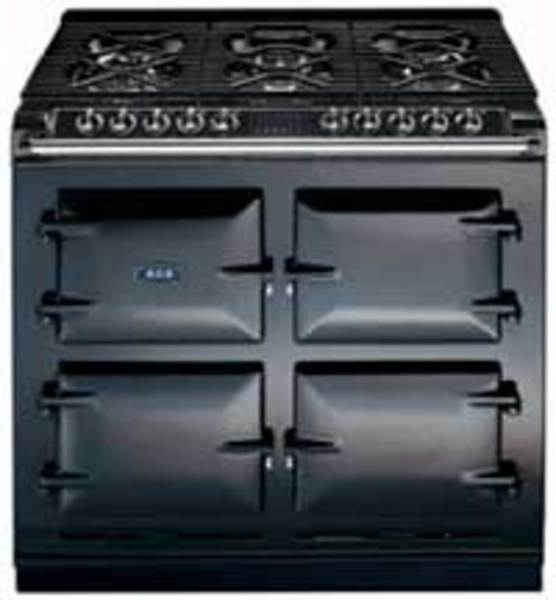
Creating the Look
As inspiring as the Wilsons’ kitchen is, most of us are reluctant to give up modern-day amenities like cabinet and counter space and the latest in cooking technology. So how can you create a kitchen that is period-appropriate but still offers plenty of creature comforts? Start with historically inspired design choices and add the right reproduction appliances and accessories, and you can turn back the clock without losing today’s conveniences.
When planning your kitchen, take a few tips from the Wilsons’ architect. Take advantage of cross breezes and door transoms when possible. Skip the center island in favor of a freestanding worktable. Instead of solid cabinets, try mixing open shelving and glass-front cabinets to evoke an old-fashioned feel. For added storage, re-create the butler’s pantry by installing a walk-in pantry with open shelving.
Many items popular in the early 20th century are coming back into vogue, making it easier than ever to mimic period details. Take linoleum: As a sustainable material (its main ingredients, linseed oil and wood flour, are renewable resources), it’s experiencing a resurgence on kitchen floors, with several historically based patterns and colors available. High-end, multiple-oven ranges built with today’s kitchen-centric households in mind can replicate the look of the Wilsons’ professional-grade cooker.
White porcelain doorknob by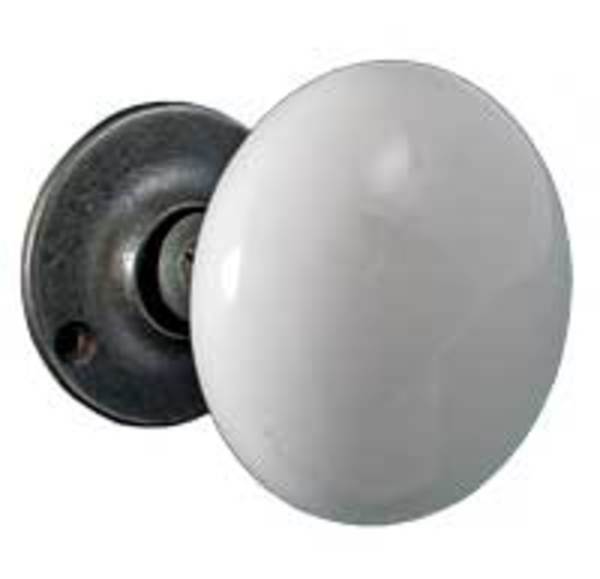
And don’t forget the small details that go a long way in creating a historically appropriate look. Porcelain doorknobs and simple, bell-shaped shades are available from a number of manufacturers specializing in historic reproductions. Similarly, reproduction farmhouse sinks are relatively easy to find—or consider purchasing an antique version from a salvage shop to add age and patina to the space.
Another way to incorporate authenticity in a kitchen is by adding antiques such as iceboxes—instead of holding perishables, they can be used as extra cabinet space for dry goods or cleaning supplies.
Remember, when creating a period-inspired kitchen, the goal isn’t to completely replicate kitchens of the past, but rather to design a welcoming space that both reflects the age of your home and accommodates today’s needs.
Nancy E. Berry is the editor of New Old House magazine. She is currently restoring an 1870s Queen Anne on Cape Cod.







